A Study of User Interface Modifications in World of Warcraft
by Sean Targett, Victoria Verlysdonk, Howard J. Hamilton, Daryl HeptingAbstract
The World of Warcraft (WoW) (Blizzard Entertainment, 2004) massively multiplayer online role playing game (MMORPG) provides users with extensive control over its user interface (UI), which has inspired the emergence of a large community devoted to developing UI modifications (UI modding). Through investigation of the members of the community of those who design and use UI modifications for WoW, we gather information that may aid in the creation of communities dedicated to modifying the interfaces of other software packages. The goal of this paper is to study the effect that user created interfaces have had on WoW and its community of users. To achieve this goal, we issued an online survey to WoW players that investigated four aspects of the community: (R1) the backgrounds of its members, (R2) their attitudes towards modifications and the community itself, (R3) their use of UI modifications, (R4) the characteristics and motivations of users who create and share modifications. The survey results represented numerous unique viewpoints and shed light on the varied nature of the UIM community of those who design and use WoW modifications. The results suggest that the interface of a videogame is best developed in concert with its players via UI modifications because the users of the system may be the best equipped to design or customize the interface to meet their needs. Since every user may have unique ideas about the perfect interface for a software package, perhaps the only way one could ever satisfy all users is to give them the ability to create their own.
Keywords: World of Warcraft, Massively multiplayer online game, Statistical survey, User interface, Human-computer interaction, User interface modification, User interface add-ons, Modding; UI mods
Introduction
The quality of the user interface (UI) of a videogame is crucial to its success and playability (Pausch, Gold, Skelly & Thiel, 1994). Unlike other types of software, the sole purpose of a videogame is to entertain users through interaction with the interface of the game software. Fear of commercial failure motivates videogame developers to make improvements in areas of Human-Computer Interaction (HCI) and interface design.
A popular trend among videogame developers is to provide players with software tools that enhance a player's ability to modify (mod) a game (Hyman, 2004). Allowing users to create content extends the shelf life of a game and expands the amount of playable content for all users at little cost to the developers. A more recent trend is to allow users to create not only customized virtual objects and environments but also customized interfaces. Giving a software user the power to create a customized UI has direct implications for HCI (Fischer, 2007) that have not been explored in the rest of the software industry (Barr, Noble & Biddle, 2007).
The massively multiplayer online role playing game (MMORPG) World of Warcraft (WoW) (Blizzard Entertainment, 2004) provides users with extensive control over its UI. According to Soren Johnson, lead designer/ programmer for Civilization 4 (Firaxis, 2005) and Spore (Maxis, 2008):
One of the most impressive things about that game [WoW] is the flexibility it gives users to create their own custom interfaces. The interesting thing about this decision is that while it taps into the incredible resources of the user modding community, it is also a tacit admission that a game's interface is best developed in concert with the players [emphasis in original]. (Johnson, 2006, para. 1)
Since its release in 2004, WoW has been extremely successful, with 8 million active subscribers in January 2007 (Hecht, 2007) and 11 million in May 2011 (Holisky, 2012). WoW has a large community devoted to user interface modifications (UI modifications or addons), as evidenced by 38 thousand threads and 280 thousand registered users on the forums for a single website dedicated to modding the game (WoWInterface, 2012).
Taylor (2006a) reflected on the effect of UI modifications on the WoW game based on personal experience and anecdotal evidence. Conclusions reached were that some UI modifications, such as damage meters, assist in collaborative play but might also contribute to stratification among users, since these UI modifications allow quantitative ratings to be assigned to players’ efforts.
The goal of this paper is to study how user created interfaces have affected WoW and its community of users. It reports on why users take part in creating and using such content. It also examines the community of those who design and use UI modifications for WoW (hereafter called the UIM community). Through investigation of the members of the UIM community in terms of their characteristics and their underlying motivations for participating in community activities, we gather information that may aid in the creation of communities dedicated to modifying the interfaces of other software packages.
To achieve this goal, we issued an online survey to WoW players in 2007 and 2011. Using an empirical research tool is intended to complement Taylor's approach. The survey investigates four research questions: (R1) What are the backgrounds of users who create and use UI modifications? (R2) What are the attitudes of the UIM community towards modifications and the community itself? (R3) What types of UI modifications are popular and how are they used? (R4) What are the characteristics and motivations of users who create and share UI modifications?
This paper analyzes the results of the survey and serves as a comparative study for the two years. In the Background section, we provide background information on Human-Computer Interaction, user created content, online communities, and user interface modification, as well as some WoW terminology. In the Research Instrument and Methodology section, we describe the design of the survey. In the Results section, we present the survey results, with respect to research questions R1 through R4, and in the Analysis section, we draw conclusions from these results. Finally, in the Discussion section, we discuss the implications and give directions for future research.
In this study, we are seeking a middle ground between HCI and Game Studies. In particular, we were intrigued by the potential effects of providing a user with freedom to change the UI. Since this capability manifested itself vividly in the WoW game, we studied it in that context. By capturing evolving user responses to the novel UI modification aspect of WoW, we provide data and preliminary analysis of potential interest to those who analyze either games or user interfaces.
Background
Human Computer Interaction (HCI) is fundamentally the study of the cyclical flow of information between computer software and the human user of that software (Rosson & Carroll, 2002). As software users’ objectives become increasingly complex, so too do the user interfaces required to facilitate the interaction between users and computers. HCI is concerned with usability: including goals of effectiveness, efficiency, safety, utility, learnability, and memorability (Rogers et al., 2011); and user experience: facets of which include "beyond the instrumental", "the nature of the experience", and "emotion and affect" (Hassenzahl and Tractinsky, 2006, p.92). It attempts to understand the characteristics of a "good" interface and "good" user experience.
HCI encompasses the software, the people using it, and the interactions between them. Naturally, HCI researchers are interested in the increasingly complex interactions between a videogame and its players. Videogames are within the domain of HCI because they are software, run on computers, and are used by humans via an interface (Barr et al., 2007), which makes them excellent candidates for the study of interface designs.
User created content refers to any type of content, such as text, video, and audio, that is generated by end-users rather than traditional content creators. An early example of dependence on such content occurred with the launch of Wikipedia, the so called "people's encyclopaedia," in 2001 (Sutherland, 2006). Since then, the term has become associated with any case where the viability of operation depends on people making free contributions of information.
An important aspect of this content is the community of people who create it (Fischer, 2007). LeFever defines an online community as "a group of people who use the internet (websites, email, instant messaging, etc.) to communicate, work together and pursue their interests over time" (2003, para. 1). An online game, by its very nature, encourages cooperation amongst its players, which can build a thriving online community. The WoW UIM community consists of all people who develop UI modifications (modders) for WoW or use modifications developed by others.
A UI modification is a collection of markup files, scripts, and textures that a user can employ to modify the graphical user interface of a videogame. UI modifications range from changes to a single button or interface element, to entire redesigns of the interface with new themes and functionality (Gilbert & Whitehead, 2007). For example, Figure 1 shows WoW's default UI, and Figure 2 shows a modified UI. Essentially, a UI modification is a set of files that are used to improve or extend a player's interaction with a videogame. In most cases, a UI modification is a self-contained and singly purposed component, but it can also be a collection of other modifications.
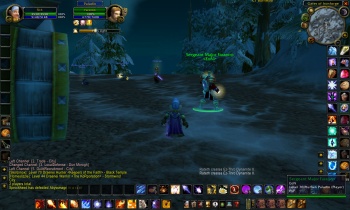
Figure 1. Screenshot from WoW with the default UI
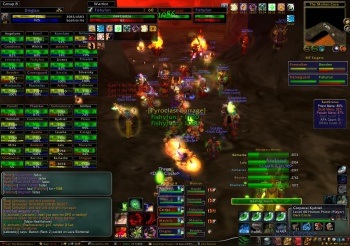
Figure 2. Screenshot from WoW with the X-Perl UnitFrames UI modification (Day, 2012)
WoW’s interface can be modified through a combination of Extensible Markup Language (XML) and code written in the Lua scripting language (Lua, 2012; WoWWiki, 2012). An interface modification kit is also supplied by Blizzard Entertainment to aid users in their endeavours (Blizzard Entertainment, 2012). Support from videogame developers has been integral to advancement of modding in general (Sotamaa, 2010). Although not every user initially possesses sufficient knowledge to develop a UI modification, the UIM community provides numerous tutorials and expert advice to help novice modders.
In the context of studying WoW UI modifications, some MMPORG terminology is helpful. The standard classification taxonomy has three major roles: the healer, the damage dealer (also called damage per second (DPS)), and the tank (who shields the weaker players from attackers). WoW users often form in-game alliances (guilds) for the purpose of finding skillful players with whom to raid (i.e. work together to accomplish a quest). Guild members assist each other with in-game challenges and share knowledge of the game.
Research Instrument and Methodology
Research Instrument: The Survey
We designed the survey to group similar questions together and to progress from general to specific questions. We placed questions that were easy to answer near the beginning, where we anticipated participants would be fully attentive. This design encouraged an uninterrupted thought process as participants progressed through the survey, and allowed them to become used to answering questions before proceeding to those that required more detailed answers. We reasoned that it would also encourage participants to answer key questions used to classify WoW users. In the 2011 version of the survey, some question groups were rearranged for improved flow of thought, and some questions that had not proved useful in the 2007 version were eliminated. Targett (2011) and Targett et al. (2012) give the 2007 and 2011 versions of the survey, respectively.
Questions 2 to 12 in 2007, 4 to 10 and 42 to 45 in 2011, gathered participants’ background information (R1). These non-invasive questions allowed us to consider characteristics of the UIM community and compare them to those of videogame players in general. The survey asked about participants' proficiency in WoW and with computers in general in order to determine whether members of the UIM community were typically more experienced users, or if they were equally as likely to be novice users. The survey also asked participants how many hours they spent each week playing WoW and how much previous experience they had with massively multiplayer online games (MMOs). We aimed to verify the survey participants’ suitability for study and their reliability as a resource from which to extract information about the game.
Questions 13 to 18 in 2007, 46 to 50 in 2011, assessed participants' general feelings toward UI modifications in WoW, and questions 71 to 79 in 2007, 80 to 88 in 2011, assessed the attitudes of participants toward the UI modification community (R2). We were interested in the impact of this innovation and how it had been received by WoW players. We asked several questions that were used to compare participants’ feelings toward modified UIs and the default UI. We also asked if they felt using UI modifications gave them an advantage over other players and whether or not this advantage was fair.
Questions 19 to 70 in 2007, 11 to 21 and 51 to 79 in 2011, addressed the usage of UI modifications (R3). To reduce confusion, the many modifications available were classified into relatively few categories. Because the Curse Gaming website was the largest website where the survey was advertised, with 19 million visitors each month (Curse Gaming, 2012), the modification categories given on this website were adapted for the survey. We were interested in identifying the most heavily used categories of modifications because they could potentially be used to identify parts of the default interface that need improvement. We hoped to investigate how participants fit UI modifications into their play styles and whether they preferred to select individual modifications to suit their needs or to use packages of modifications.
Questions 122 to 140 in 2007, 106 to 126 in 2011, evaluated the characteristics and motivations of users who had developed UI modifications (R4). We were interested in determining whether participants who passively consumed these UI modifications differed from those who actively developed them. We expected that modders would be more technically proficient and have higher skill levels in WoW than other users. We aimed to explore the motivations that caused modders to participate in the UIM community and create interface modifications rather than downloading them. We anticipated that analysis of the participants’ answers might aid in understanding how to create similar communities for other software.
Methodology: Administering the Survey
We presented the survey in an online format to make it available to WoW users worldwide and to approach the users of the online game in a familiar way. The survey was run from 1 January 2007 to 28 February 2007 and from 1 June 2011 to 31 July 2011. We advertised participant recruitment using a Google AdWords campaign and on several online forums related to WoW. The only requirement for participation was that respondents must have played WoW at some time since its release. Since WoW had millions of subscribers in both years, many potential participants existed.
Results
The survey attracted 283 participants in 2007 and 58 in 2011. Although this discrepancy seems striking, a sample size greater than 30 is adequate for computing basic statistics. Since 99.6 percent of participants in 2007 and 96.6 percent 2011 indicated that they had either developed or used a UI modification, we take the statistics for all participants to represent those for the UIM community. Separate subsections describe results from research questions R1 to R4.
Background of Survey Participants
As shown in Figure 3, 91.4 percent of participants in 2007 were male and 86.0 percent male in 2011, which were not significantly different percentages (Binomial=-1.227, p=.110). (Throughout this paper, any variation of the word "significant" means "statistically significant at the 95% confidence level, i.e. p ≤ 0.05.")
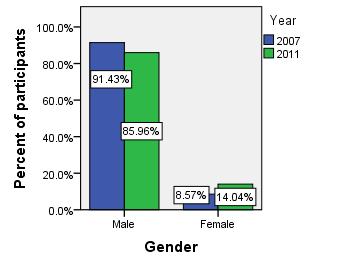
Figure 3. The gender ratio in the UIM community

Figure 4. Age of participants
The average age of the participants was approximately 24 years (Figure 4) with no significant differences in distribution between the two years (Mann-Whitney U=-0.491, p=.624). Figure 5 shows the results for the number of hours spent playing WoW per week. Using the values 2.0, 7.5, 13.0, 18.0, 25.5, 35.5, and 45.5 as midpoints for each interval, the average participant played approximately 24.5 hours each week, with little discrepancy between the two years (Mann-Whitney U=0.558, p=.577). The number of hours played per week was evenly distributed across all age groups (Kruskal-Wallis=5.689, df=4, p=.224).
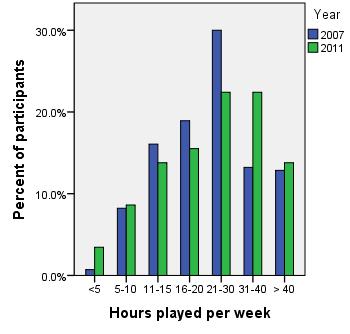
Figure 5. Hours participants spent playing WoW each week
Female participants played on average 7.5 hours more than males per week in 2007 (Mann-Whitney U=-2.829, p=.005), and 11.4 hours more per week in 2011 (Mann-Whitney U=-2.254, p=.024).
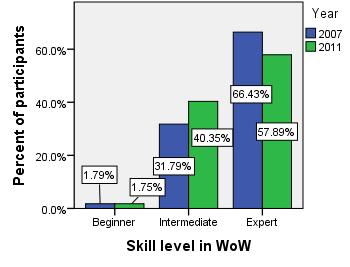
Figure 6. WoW game proficiency levels of participants
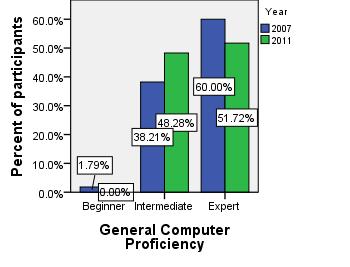
Figure 7. Computer proficiency levels of participants
The majority of participants considered themselves to be experts within the WoW game (Figure 6) as well as with computers in general (Figure 7) with no significant differences between the two years (Binomial=-1.219, p=.111; Binomial=-1.153, p=.125). As illustrated in Figure 8, those who rated themselves as expert WoW players spent significantly more time playing the game than those who did not (Mann-Whitney U=4.521, p=.000). Of the participants who rated themselves as experts in general computer proficiency, 72.6 percent in 2007 and similarly 79.3 percent in 2011, also rated themselves as experts in WoW (Binomial=0.602, p=.274).

Figure 8. Skill level in WoW versus time spent playing the game
Attitudes towards Modifications and the Community
Among the participants, 97.8 percent in 2007 and a significantly fewer 91.2 percent in 2011 were using UI modifications at the time of taking the survey (Binomial=-2.931, p=.002). In 2007, 69.4 percent of participants had not used a UI modification in a previous game and similarly 63.2 percent had not in 2011 (Binomial=-0.879, p=.190).
When the survey asked how participants felt about modifications in general, the overwhelming majority responded positively with answers such as "I love them" and "Couldn't play without them." One respondent summarized the sentiment in the following way:
The interface is such a vital part of the game. It’s the only medium between the player and what they see on the screen. With the ability to customize an interface, the game allows for specific changes and functions to suit the varying tastes of its players. I can honestly say that a customizable User Interface has made playing WoW such a better and more enjoyable experience. I believe that if other software developers added more customization options to programs that are used every day… users would be more inclined to use their own "custom" version of the software.
This response clearly illustrates the positive impact and widely popular reception of UI modding among WoW players. Participants commonly described the UIM community as "very helpful," "very friendly," and "very active." There was a general feeling of gratitude and obligation towards the community for help with learning how to develop modifications. The few negative responses indicated that some modifications are inappropriate because they provide information to which a player should not have easy access or because they make decisions for the player and thus change the nature of gameplay.
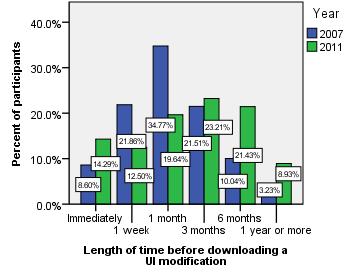
Figure 9. Length of time before participants modified their UIs
In 2007, 65.2 percent of participants reported having downloaded a modification within their first month of gameplay (Figure 9). In 2011, the responses were evenly distributed across time periods (Chi-square=5.286, df=5, p=.382). A larger percentage of participants in 2011 than in 2007 waited longer than one month before downloading their first modification (Binomial=-2.809, p=.002).
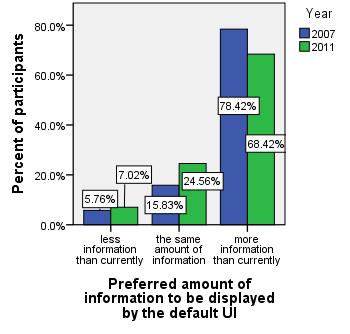
Figure 10. Preferred amount of information to be displayed
Most participants, 78.4 percent in 2007 and similarly 68.4 percent in 2011 (Chi-Square=3.631, df=2, p=.163), indicated that Blizzard’s default interface was providing too little information (Figure 10). As shown in Figure 11, a small but significantly greater portion of participants preferred the default interface in 2011 than in 2007 (Binomial=4.978, p=.000).
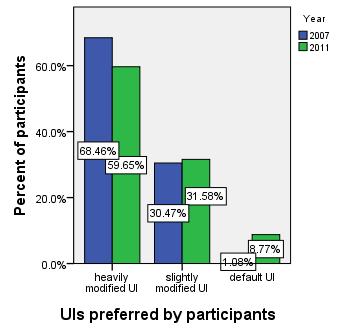
Figure 11. UI preference among participants
In 2007, 59.1 percent of participants felt that WoW would not be as enjoyable to play without the ability to modify the interface. However, as shown in Figure 12, there was no majority opinion among participants in 2011 (Chi-square=1.273, df=4, p=.866).
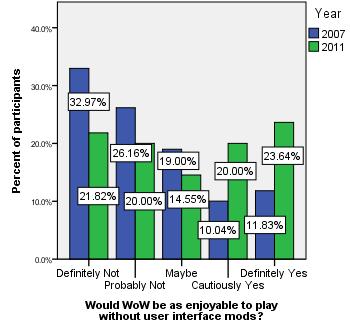
Figure 12. Level of play enjoyment without UI modifications
We were interested in the participant’s feeling towards the real, or perceived, advantage that players who used modifications had over those who did not. In 2007, 60.22 percent of participants felt that UI modifications gave them an advantage over other players and a further 18.3 percent thought that it might give them an advantage (Figure 13). Similarly in 2011, 66.67 percent felt it gave them an advantage while another 21.1 percent thought that it might give them an advantage (Chi-Square=2.891, df=2, p=.236). Despite the strong opinion that UI modifications were advantageous, there was an even greater feeling that this advantage was not unfair. Of the participants in 2007, 83.8 percent felt that the advantage was fair, and another 7.9 percent thought that the advantage only might be unfair (Figure 14). Similarly, 79.2 percent felt the advantage was fair in 2011, and a further 15.1 percent thought it was only might be unfair (Chi-Square=4.034, df=2, p=.133). Several survey responses indicated that this advantage was considered fair because no barriers, such as a financial cost or a skill requirement, prevented any user from installing modifications. One participant stated: "The reason I don't believe addons provide an unfair advantage is becomes [sic] [recte because] everyone can download and use them. Non [sic] have a price."
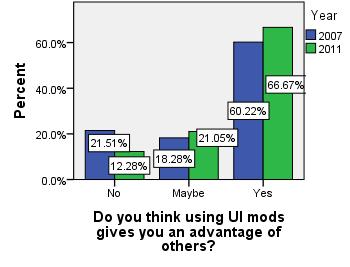
Figure 13. Advantage due to UI modifications
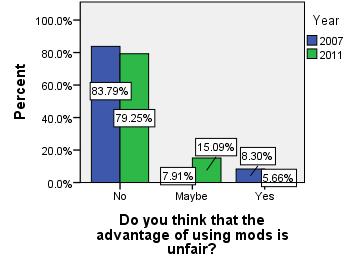
Figure 14. Unfairness of using UI modifications
Modification Usage Patterns
The survey provided a list of categories, adapted from the Curse Gaming addon site (Curse Gaming, 2012), and asked if participants were using or had used in the past, a UI modification that would be classified in each category. As shown in Figure 15, the most frequently used modifications fell into the interface bar, map, raid, and inventory management categories. These four types of modifications are applicable to all classes of characters.

Figure 15. Usage of categories of UI modifications
The least used categories that applied to all classes were audio modifications and modification development tools.

Figure 16. Prevalence of configuring modifications to match play style
The survey asked participants if they felt that they had modified their interfaces to fit their play styles or if they felt that they had adjusted their play styles to fit the UI modifications they had installed. As shown in Figure 16, 59.1 percent in 2007 and similarly 59.3 percent in 2011, indicated that they configured UI modifications to match their play styles (Chi-Square=6.509, df=3, p=.089). The survey also asked for specific examples of how these UI modifications fit into participants' play styles. First, participants responded that they were able to play the game without modifications, but that they used modifications to augment the game and customize how information was presented to them. One participant analyzed his usage in the following way:
Mods allow a user to quantify the importance of a piece of information in a given situation. Thus quantified, the mod can filter out the unimportant pieces of information while emphasizing the important ones. With important information emphasized, the user is more likely to make a "good game decision" as required by that information. In addition, with unimportant information filtered out, information overload distractions are less likely to occur.
Second, participants used UI modifications to automate some of the more tedious tasks of the game. Participants frequently mentioned that the modifications they used did not make any decisions for them. They said that modifications "make performing actions less cumbersome" and "automate tedious out-of-combat chores." One participant emphasized the fact that his UI modifications had never made any decisions for him and provided an example:
I do use a few "automation" type modifications, such as to automatically repair my items when speaking to a vendor, but do not and have never used modifications that make playing decisions for me (i.e. "mana conserve" modifications or modifications which tell me which rank of healing spell to cast).
As shown in Figure 17, 47.7 percent of players in 2007 indicated that they preferred to use modifications to augment their play styles rather than to automate tasks. Although only 31.5 percent of participants in 2011 shared this preference and 48.1 percent of users indicated that they use modifications for both cases, there are no statistically significant differences in participants’ responses for the two years (Chi-Square=6.476, df=3, p=.091). Some participants seemed to be rather defensive about the topic of automation. None of them wanted to be associated with any UI modifications that could play the game for them without input.
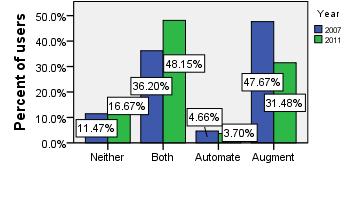
Figure 17. Preferences between augmentation and automation
The survey asked if participants used different modifications for different situations in the game. In 2007, only 37.3 percent used different UI modifications depending on the situation. The results from 2011 were significantly different (Binomial=2.196, p=.014) with 52.8 percent using different modifications depending on the situation. Within this group, 76.7 percent in 2007 and 64.3 percent in 2011 rated themselves as experts in WoW and none rated themselves as beginners. However, in 2011, participants in this group were equally as likely to rate themselves as expert or intermediate WoW users (Binomial=0.275, p=.784).
The survey asked whether the participants preferred to select multiple individual modifications and build individualized interfaces or if they preferred a preselected package. Participants overwhelmingly preferred the former in both years. As shown in Figure 18, 91.3 percent of participants in 2007 and similarly 92.6 percent in 2011 preferred selecting single UI modifications over a package (Binomial=0.096, p=.462).
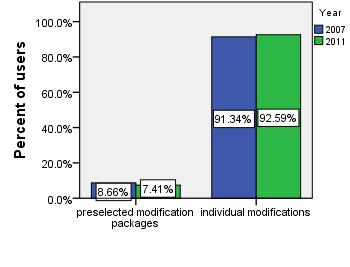
Figure 18. Preferences between individual modifications and packages
Characteristics and Motivations of UI Modders
The last portion of the survey concerned only participants who indicated that they had developed a UI modification. We intended to characterize modders and ascertain their motivations (R4). Of the participants, 28.6 percent in 2007 and similarly 27.6 percent in 2011, reported that they had developed a modification (Binomial=0.026, p=.490). This subset of participants did not significantly differ from the average participant in terms of age (Mann-Whitney U=1.541, p =0.123), gender (Mann-Whitney U=1.246, p=.213) or number of hours they spent playing WoW each week (Mann-Whitney U=-0.956, p =0.339). However, modders were 14.9 percent more likely to be experts with computers (Figure 19) and 16.1 percent more likely to be experts in WoW (Figure 20) with no significant differences between the two years (Binomial=-0.614, p=.258; Binomial=-0.801, p=.205).
In 2007, 98.7 percent of modders were playing WoW. This portion was significantly smaller in 2011 at 87.5 percent (Binomial=-2.851, p=.018), but was still a strong majority. In 2007, 84.2 percent of modders were using modifications that they developed while playing the game, and similarly 81.2 percent did so in 2011 (Binomial=0.000, p=.475). The majority of modders, 98.7 percent in 2007 and similarly 86.7 percent in 2011, reported that they used other modders’ modifications while playing (Binomial=-2.975, p=.016).
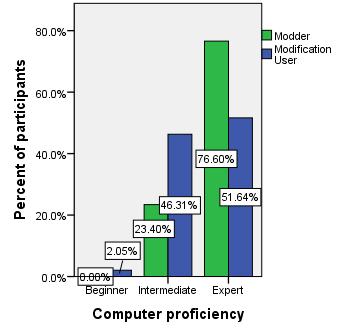
Figure 19. Computer proficiency of modders and modification users
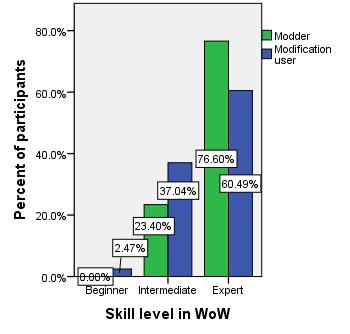
Figure 20. Skill levels in WoW of modders and modification users
Modders’ reasons for developing UI modifications fell into three categories. First, they saw an unmet need for a type of modification. One modder mentioned developing a modification to fill a need that was later met more effectively by another modder’s modification; subsequently, he stopped using his own modification. Although trying to improve on existing modifications was another popular reason for developing a modification, modders were more likely to try to find solutions to new problems.
Second, modders wanted to improve existing UI modifications. Some participants indicated that they had fixed UI modifications that had been broken by updates to WoW. Others claimed that they found that they could improve or modify an existing modification to make it work better or to better fit their needs. One such modder made the following statement:
I started out fixing bugs in current modifications, [and] then went on to modifying other people’s modifications to include new features. When i [sic] couldn’t find a mod to accomplish a function i [sic] wanted in the way i [sic] wanted, i [sic] decided to try my hand at making my own.
Third, many participants were curious about the modification process. They looked at developing a WoW UI modification as a good opportunity to learn the Lua scripting language or to gain experience in interface design. One modder summarized this common sentiment: "I enjoy programming and playing WoW... I look for things that need to be in the interface and are not so I can have fun solving how to add them."
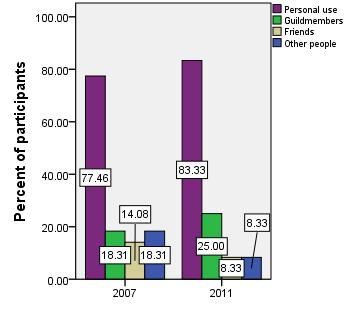
Figure 21. Target users for UI modification developers
As shown in Figure 21, a large majority of modders indicated that their modifications were designed for personal use. The remaining modders worked on modifications to help a friend or guild mate, or to benefit the community in general. One individual stated that he had developed a modification for three different groups and ranked them by stating "Self, Guild, Community - in that order."
Modders shared their modifications with the community for a variety of reasons. Some shared their work for the sense of pride and bragging rights that come with having others depend on them. Some felt that it was a reciprocal act: because the community had helped them develop the modification, they felt obligated to give something back. Others took a more altruistic position and shared their work for the greater good. However, some participants said that they did not share. The most commonly cited reasons for withholding their work were self consciousness about the quality or appeal of their modification and unwillingness to deal with the demands for support and feature requests from a large community.
The survey asked modders what personal benefit they received from sharing their modifications with the intention of discovering ways to encourage similar sharing among users of other software. Modders most commonly mentioned personal satisfaction and thanks from the community. Two participants expressed it as a "warm fuzzy feeling." Others described a more practical benefit: "By sharing your modification with the community you get a lot of feedback (and help with troubleshooting) your mod." Conversely, some modders replied that releasing their modification to the public caused a negative impact. They disliked responding to and supporting the community once a modification became popular. One modder described his experience after sharing his modification as "a detriment to my ability to play uninterrupted," and another described it as "an enormous hassle, especially since most users have no idea what is involved in creating a mod."
Analysis
This section analyzes the results for research questions R1 through R4. As mentioned in the previous section with respect to R1, the UIM community was predominantly composed of young adult males, who were experts with both computers and WoW and who played an average of 24.5 hours per week. Males formed more than 85 percent of the UIM community, which is high compared to the US average of 58 percent for videogame players in general (Entertainment Software Association [ESA], 2011). However, these percentages are similar to the results of other studies of the MMO genre. Williams, Yee and Caplan (2008) reported 80.8 percent males for MMO users, which is similar to the 2011 results (Binomial=0.822, p=.206) and suggests that our results are representative of MMO users.
The average age among participants was 24 years, which was lower than expected because the industry average age for gamers in the US was estimated to be 37 years (ESA, 2011). For both years, the number of hours played per week was found to be evenly distributed across all age groups. This result differs from the results found by Williams et al. (2008), where play time increased with age for MMO players, but they claimed that their results were unexpected.
The few female respondents to the survey played significantly more hours per week than the males, demonstrating that they were among the most dedicated of WoW players. This result is consistent with the Williams et al. (2008) study.
Participants who considered themselves to be expert computer users were also likely to consider themselves to be expert WoW players. When a user from this group is critical of a game feature, we can assume that there exists an actual deficiency in the game rather than a misunderstanding on the part of the user, which makes this group a useful one from which to gather information. These results are broadly consistent with those found by Williams et al. (2008), which showed that the majority of MMO players were likely to be highly educated. Such users are appropriate for this study because they are highly knowledgeable about the software and spend large amounts of time using it.
With respect to R2, as mentioned previously, over 90 percent of participants used UI modifications in both years. The wide adoption of a feature that is entirely community run strongly suggests that UI modifications are a valuable innovation. Nonetheless, the number of participants currently using UI modifications declined significantly from 97.8 percent in 2007 to 91.2 percent in 2011. Since 96.5 percent of participants in 2011 reported that they had used a UI modification at some time in the past, this decrease is worth analyzing. It could be due to a variety of factors, such as participants playing the game less, changes in the game (fewer players required for raids), or a reduction in the fraction of expert users. Another possible explanation is that Blizzard incorporated features similar to the most popular UI modifications in the default interface, as discussed in the next section.
Most participants had positive opinions about the UIM community. UI modifications were used by players at all skill levels, rather than say only for veteran or elite players. While the majority of participants in 2007 reported that they had downloaded their first modification within one month of playing WoW, participants generally waited longer in 2011. Apparently the default WoW interface did not meet the needs of novice users in 2007, since many new players felt the need to modify it, but more novice users were satisfied with it in 2011.
In both years, most participants indicated that the default WoW UI displayed too little information and said they preferred a customized interface. Software developers need to weigh the needs of novice users who could be overwhelmed by too much information against those of advanced users who may wish to see numerous granular details. Our results suggest that Blizzard may have erred on the side of too little information. The majority of participants indicated that they preferred a modified interface over the default interface, but the percentage that preferred the default interface increased significantly between the two years. Again, these results may reflect changes to the default UI between the two years, which may have made certain modifications redundant.
Despite the opinion that UI modifications provide an advantage over other players, which was held by the majority of participants in both years, modification use was not considered unfair because modifications are available for free via forums to all players. They are free because the Blizzard UI Add-On Development Policy states that profiting from the sale or distribution of these modifications is prohibited (Nethaera, 2010).
As previously mentioned with respect to R3, the modification categories with the highest usage are interface bar, map, raid, and inventory management. They each involve managing and displaying large amounts of data in a way that is meaningful by bringing information that is available in the game, but not immediately visible, to the surface. The least used categories changed the audio experience in the game and provided modification development tools. When the survey was first run, there was demand for in-game control over playing MP3 music and several modifications addressed this demand. The survey results suggest that dissatisfaction about audio control did not motivate many players to look for relevant UI modifications. The low usage of modification development tools was not surprising because they only appeal to people who want to create UI modifications. These results suggest that given the limited facilities for UI modification available in WoW, control over the management of information was the major reason that users modified their interfaces.
More participants in 2011 than in 2007 changed the UI modifications they used depending on their in-game situations. Furthermore, participants in this group were likely to be expert WoW users in 2007, but were equally likely to be intermediate users in 2011. Participants preferred modifications that fit their play styles and enhanced the way they played over modifications that required changing how they played or that automated tasks for them. Participants also expressed a strong preference for selecting individual modifications to meet their needs rather than simply downloading a collection of modifications. This result provides evidence that UI modifications provide a way of personalizing the interface to match a particular user's play style.
As discussed earlier with respect to R4, modders were a minority among survey participants but were similar to the average participants in that they tended to be young adult males. The results of the survey supported our hypotheses that modders are more likely to be technically proficient than other users and also more likely to be experts in WoW. In 2011, 87.5% of modders were playing WoW. If we assume that all participants have met the requirement of having played WoW at some point, as stated in the consent form, the results suggest that the UIM community is able to retain members who are no longer WoW players. Nonetheless, modders typically both play the game and use UI modifications. Since the majority of modders use other modder’s modifications, we conclude that developing UI modifications was not an indication that they did not want to rely on others.
Modders were motivated to create UI modifications by wanting a feature that was absent from the default UI, the desire to improve on existing modifications, and curiosity towards modification development. Modders obtain a sense of pride in and ownership of their modifications. As well, the adaptation of others' modifications is generally encouraged in modding communities. Sotamaa (2010, p. 250) notes: "Reworking someone else's work is not regarded as theft but more as paying homage to a good job, as long as the author of the original is credited for his or her part". This constant drive to improve the existing UI modifications is an interesting phenomenon for HCI because when modifications are built on top of one another, the UI is incrementally refined.
Since survey participants and modders specifically have a high degree of computer proficiency, it is not surprising that many who enjoy playing WoW also enjoy programming modifications for fun. Modders for other games have been reported to take on programming modifications to contest the challenge posed by videogames as "complex code-based systems" and some use their modifications as portfolio pieces when applying for positions in the videogame industry (Sotamaa, 2010, p. 246, 251).
Most modders developed modifications first for personal use, second for their friends or guild members and third for the UIM community in general. Typically modders shared their modifications because of pride in their work, obligation or gratitude towards the community, and the opportunity to receive feedback from other users. Some modders opted not to share their work because they felt inconvenienced by the responsibility of providing continuous support (i.e. bug fixes and updates) for their modification to the community. Although there seemed to be several disadvantages to sharing a modification, many modders did so anyway, despite the lack of material benefits.
Discussion
We discuss support for the idea that an interface for a game is best developed in association with its users, the morality of game developers benefitting from unpaid work, the connection to the seed/ evolve/ reseed paradigm of software development, and the creation of communities dedicated to modding other forms of software. For each issue, we specifically identify who might be interested. We also give suggestions for future research.
With respect to Game Design, the results of our survey provide some support for the claim of Johnson (2006) that the interface of a videogame is best developed in concert with its players via UI modifications because the users of the system may be the best equipped to design or customize the interface to meet their needs. These users can be highly motivated. They are experts and can identify problems and potential features that the software designers may not have considered. UI modders, in particular, are knowledgeable about both the developmental and end-user aspects of the software in question. The best evidence for their value is the numerous UI modifications apparently taken from the UIM community and implemented in the default WoW interface, including Omen (Berntsen, 2011), KLH Threat Meter, Raid Frames, Scrolling Combat Text, Totem Stomper, Visual Cast Bars (Gilbert and Whitehead, 2007), and Totemus (Schramm, 2008). Micah Whipple (aka Drysc), a Blizzard employee who was a community manager for the US WoW forums, said, "We are constantly evaluating UI addons .... There are ... cases where we have recognized specific functionality as purely beneficial and positive, and implemented it into the core UI" (Drysc, 2006).
If Blizzard intended from the beginning to obtain ideas for user interface changes from the UIM community, then they may be involving the players in participatory design. Taylor (2006b) discusses new ways to view game players other than as consumers, (potential) disruptors, unskilled/ unknowledgeable users, and rational/ selfish actors. For her, the opportunity to involve game players in a strong form of participatory design is clear. For Fischer and Ostwald (2002), the Seed/ Evolve/ Reseed paradigm is a means to achieve participatory design, after the system has been deployed. With respect to this paradigm: the initial WoW game is the seed, evolutionary growth happens with the informed participation of the UIM community when they create UI modifications, and then the best ideas from these UI modifications are harvested by including them in a new release of the game, which becomes the new seed for further evolutionary growth. Game players "already are active, creative, and engaged agents within games, though this fact often goes unacknowledged" (Taylor, 2006b). This lack of acknowledgement may lead to problems, not so much with respect to intellectual property or remuneration but with respect to trust (Kow and Nardi, 2010). According to Kücklich (2005), three major obstacles exist for modders: "recognition of their status as creators of value for the industry and gamers alike, claiming their intellectual property rights, and overcoming the ideological representation of modding as a mere hobby." These obstacles did not surface in our survey results, except one modder who stated:
While I understand that Blizzard is legally permitted to "steal" UI mods and incorporate them into the standard interface, there are programmers out there who are devoting a lot of time and energy to making their mods great, and when Blizzard implements the functionality, they are doing these members of the community an injustice.
Overall, our survey supported the view of Wirman (2011) that modifications are "hacking with permission"; they are best understood as a form of fan activity.
There is no official support for WoW players after they install UI modifications. Blizzard Technical Support cannot assist users with installing modifications, and users may be required to disable all UI modifications prior to receiving assistance with other problems (Krinskal, 2011). Demanding technical support from the game developers for the thousands of UI modifications available may be unreasonable, but since some modders are reluctant to provide support for their modifications, some users may receive no assistance.
For the interest of HCI researchers, we observe that one disadvantage of a user-modified interface is the pressure it places on the user community to create and support software. Our survey reveals that most members of the UIM community are happy to donate their time, but is it morally right for the software developer to take advantage of them? Before concluding that the developer can design a mediocre interface and leave it to the user community improve it, we observe that WoW has an extremely large and dedicated set of users compared to other software. For Game Design, a UI modification capability may allow developers to release games earlier and without as much effort as previously, but the quality of the experience may suffer for the reasons discussed below.
With respect to HCI, the need to download or create UI modifications requires extra effort and learning from the user. Novice users typically have the most trouble and are unlikely to know which modifications they should consider and where to get them. Users may be inconvenienced by complications added by modifications to the process of updating the software. Every time the software is updated, modders may need to change their modifications and documentation. As an MMORPG, WoW's updates can be frequent and can greatly affect the UI and any installed modifications (Cornett, 2004, 10). Survey participants repeatedly complained about upgrading and the poor quality of documentation on UI modifications.
For both Game Design and HCI, we note that UI modifications are third party software, often obtained from untrusted sources. Some modification download/ installation managers, such as the Curse client (Curse Gaming, 2012), have security features to protect against malware. However, modification packages containing malicious executable files can sometimes slip through (Curse Gaming, 2007). In general, users fear password theft and in-game effects of malicious code, such as a modification that sells all their characters' items.
Because UI modifications are so widely used, in some cases, choosing not to use modifications can limit players' participation in the game: Taylor (2006a) notes that certain modifications, such as CTRA, can become a prerequisite for participation in raiding guilds and thus high-end content. Although the majority of survey participants thought that the advantage UI modifications provide is fair because any player can install and use them, some modders choose not to share their work, as previously described. Therefore, access to some modifications is limited to their developers, which might provide an unfair advantage over other players.
In the survey results, the few responses that presented negative attitudes towards UI modifications related to modifications that make decisions for the player or provide easy access to excessive information, thereby changing the nature of gameplay. In particular, participants repeatedly mentioned the AVR, Decursive and Healbot modifications. Immediately before the 2007 survey, Blizzard made a concerted effort to block modifications that automated some gameplay by changing WoW's API to remove functionality on which these modifications depended. In the case of AVR, Blizzard spokespersons commented: "The invasive nature of a mod altering and/ or interacting with the game world (virtually or directly) is not intended and not something we will allow … [AVR] removes too much player reaction and decision-making" (as cited in Van Allen, 2010). When the survey asked for participants' general feelings towards UI modifications, some supported Blizzard's need to regulate the kinds of allowed modifications, in order to maintain in-game balance among players. However, one participant complained about the "too aggressive reduction of add-on functionality."
To foster an online UIM community for other software, the development of UI modifications could be encouraged while at the same time mitigating concerns that UI modders have about sharing them. The survey results suggest that the key to attracting UI modders and fostering a community around them is the existence of suitable repositories and fora. Many modders felt they owed something to the UIM community because of the help they received via repositories and fora. In the case of WoW, Blizzard apparently did not realize this at first; instead, the Curse Gaming network nurtured the WoW UIM community. Thus, future software developers could provide a sponsored repository for modifications and a user forum dedicated to dealing with people who have problems. With this type of forum, the sharing of a UI modification with the community could be reciprocated when other users provide feedback, testing, and bug fixes. According to the modders who participated in the survey, the biggest impediment to sharing their modifications with other community members was the inconvenience of responding to requests for new features and technical support. A forum provides a way of reducing this impediment.
According to our analysis, an online UIM community for a game could be further encouraged if roles with respect to UI modifications were defined in advance. For example, roles could be established for creating, documenting, testing, supporting users, responding to feature requests, etc. Wikipedia has roles such as editor, administrators, bureaucrats, and stewards to support the creation and maintenance of their information. This approach allows modders to concentrate on creating modifications, while enabling others to contribute according to their interests and skills. As well, it could automatically provide recognition for people's efforts.
As future research, we recommend that this study be replicated for some other game or some nongame software. Such a study might determine whether or not the conclusions reached here apply to other games or outside the gaming industry. The results might show that people could have a better experience with other software if they were allowed to create an interface more appropriate to them.
Since the role of a player in WoW greatly determines how the game is played, we hypothesized that roles would also have an impact on the player’s usage of modifications. Our survey provided some preliminary results related to this topic, but the results were limited by the survey design. We believed that the more difficult a role was to play, the more likely a player was to use UI modifications. Although our survey gathered information about the categories of modifications that each participant used, participants were unable to indicate the number and type of modifications they used while playing the various roles and game modes available in WoW. A future study could focus specifically on how the classification of users based on in-game roles affects their usage of UI modifications.
References
Barr, P., Noble, J. & Biddle, R. (2007). Video game values: Human-computer interaction and games. Interacting with Computers, 19(2), 180–195. doi:10.1016/j.intcom.2006.08.008.
Berntsen, B. (2011). Gold Capped: Improving the default auction house interface. WoW Insider. Retrieved November 12, 2012 from http://wow.joystiq.com/2011/03/24/gold-capped-improving-the-default-auction-house-interface/
Blizzard Entertainment. (2004). World of Warcraft. Blizzard Entertainment.
Blizzard Entertainment. (2012). Download the World of Warcraft Interface AddOn Kit. Retrieved November 12, 2012 from http://us.battle.net/support/en/article/download-the-world-of-warcraft-interface-addon-kit
Curse Gaming. (2007). Virus Warning. Retrieved November 12, 2012 from http://www.curse.com/news/world-of-warcraft/3202-virus-warning
Curse Gaming. (2012). Retrieved November 12, 2012 from http://www.curse.com/
Cornett, S. (2004). The usability of massively multiplayer online roleplaying games: Designing for new users. In Proceedings of the SIGCHI conference on human factors in computing systems (CHI '04). ACM, New York, NY, USA, 703-710. doi:10.1145/985692.985781
Day, I. (Zeksie). (2012). X-Perl UnitFrames [User interface modification]. Available from http://www.curse.com/addons/wow/xperl
Drysc. (2006). Retrieved November 12, 2012 from http://blue.cardplace.com/cache/wow-general/9529090.htm
Entertainment Software Association. (2011). Essential Facts about the Computer and Video Game Industry: 2011 Sales, Demographic and Usage Data. Retrieved November 12, 2012 from http://www.theesa.com/facts/pdfs/ESA_EF_2011.pdf
Firaxis Games. (2005). Sid Meier's Civilization IV. Take-Two Interactive Software.
Fischer, G. & Ostwald, J. (2002). Seeding, Evolutionary Growth, and Reseeding: Enriching Participatory Design with Informed Participation, Proceedings of the participatory design conference (PDC'02), Malmo, Sweden, pp 135-143.
Fischer, G. (2007). Meta-design: Expanding boundaries and redistributing control in design. Baranauskas, C., Palanque, P., Abascal, J. & Barbosa, S. D. J. (Eds.). Proceedings from INTERACT'07: The 11th IFIP TC 13 international conference on human-computer interaction (pp.193-206). Berlin: Springer-Verlag.
Gilbert, D. & Whitehead, J. (2007). Hacking World of Warcraft (ExtremeTech). New York, NY: John Wiley.
Hassenzahl, M. & Tractinsky, N. (2006). User experience – a research agenda, Behaviour & Information Technology, 25(2), 91-97. http://dx.doi.org/10.1080/01449290500330331
Hecht, E. (2007). WoW passes 8 million subscribers. WoW Insider. Retrieved November 12, 2012 from http://wow.joystiq.com/2007/01/11/wow-passes-8-million-subscribers/
Holisky, A. (2012). World of Warcraft subscriber numbers dip 100,000 to 10.2 million. WoW Insider. Retrieved November 12, 2012 from http://wow.joystiq.com/2012/02/09/world-of-warcraft-subscriber-numbers/
Hyman, P. (2004). Video game companies encourage 'modders.' The Hollywood Reporter. Retrieved January, 2005 from http://www.hollywoodreporter.com/hr/search/article_display.jsp?vnu_content_id=1000484956
Johnson, S. (2006). A moveable interface. Designer Notes. Retrieved November 12, 2012 from http://www.designer-notes.com/?p=26
Kow, Y. M. and Nardi, B. (2010). Who owns the mods? First Monday, 15(5). http://firstmonday.org/htbin/cgiwrap/bin/ojs/index.php/fm/article/viewArticle/2971/2529
Krinskal. (2011). Installation and Patching Troubleshooting. Retrieved November 12, 2012 from http://eu.battle.net/wow/en/forum/topic/2226264926
Kücklich, J. (2005). FCJ-025 Precarious Playbour: Modders and the Digital Games Industry, The FibreCulture Journal, 5, http://five.fibreculturejournal.org/fcj-025-precarious-playbour-modders-and-the-digital-games-industry/
LeFever, L. (2003). What is an online community? Common Craft. Retrieved November 12, 2012 from: http://www.commoncraft.com/archives/000208.html
Lua. (2012). The Programming Language Lua. PUC-Rio. Retrieved November 12, 2012 from http://www.lua.org/
Maxis. (2008). Spore. Electronic Arts.
Morris, S. (2004). Co-Creative Media: Online Multiplayer Computer Game Culture, Scan, 1(1).
Nethaera (2010). UI Add-On Development Policy. Blizzard Entertainment. Retrieved November 12, 2012 from http://us.battle.net/wow/en/forum/topic/1021053914
Pausch, R., Gold, R., Skelly, T. & Thiel, D. (1994). What HCI designers can learn from video game designers. In CHI ’94: Conference companion on human factors in computing systems (pp. 177–178). New York, NY, USA: ACM.
Rogers, Y., Sharp, H., and Preece, J. (2011). Interaction Design: Beyond Human-Computer Interaction, 3rd Edition, West Sussex, UK: John Wiley & Sons.
Rosson, M. B. & Carroll, J. M. (2002). Usability Engineering Scenario-Based Development of Human-Computer Interaction. San Francisco, CA: Morgan Kaufmann.
Schramm, M. (2008). Bringing addons into the default UI. WoW Insider. Retrieved November 12, 2012 from http://wow.joystiq.com/2008/02/11/bringing-addons-into-the-default-ui/
Sotamaa, O. (2010). When the Game Is Not Enough: Motivations and Practices among Computer Game Modding Culture. Games and Culture, 5(3), 239-255. doi:10.1177/1555412009359765.
Sutherland, B. (2006). The People's Encyclopedia; As Wikipedia grows into a mainstream Internet brand, will it be able to keep its volunteers in line? Newsweek International. Retrieved November 12, 2012 from http://whs.wsd.wednet.edu/faculty/library/docs/MSNBC_wiki.pdf.
Targett, S. (2011). A Study of User Created Interfaces in Video Games (Master's thesis). Retrieved from UMI Dissertation Express. (AAT MR88528).
Targett, S., Verlysdonk, V., Hamilton, H.J., and Hepting, D. (2013). Survey Questions for A Study of User Interface Modifications in World of Warcraft, Technical Report CS-2013-01, Department of Computer Science, University of Regina, Canada. Forthcoming. http://www.cs.uregina.ca/Research/Techreports/2013-01.pdf
Taylor, T.L. (2006a). Does WoW Change Everything? How a PvP Server, Multinational Player Base, and Surveillance Mod Scene Caused Me Pause, Games and Culture, 1(4), 1-20.
Taylor, T.L. (2006b). Beyond Management: Considering Participatory Design and Governance in Player Culture, First Monday, Special issue number 7, http://firstmonday.org
Van Allen, Fox. (2010). Blizzard to break the AVR mod in Patch 3.3.5. WoW Insider. Retrieved November 12, 2012 from http://wow.joystiq.com/2010/05/20/blizzard-to-break-the-avr-mod-in-patch-3-3-5/
Williams, D., Yee, N. & Caplan, S. E. (2008). Who plays, how much, and why? Debunking the stereotypical gamer profile. Journal of Computer-Mediated Communication, 13, 993–1018.
Wirman, H.E. (2011). Playing The Sims 2: Constructing and negotiating woman computer game player identities through the practice of skinning, PhD Thesis, University of the West of England, Bristol.
WoWInterface. (2012). ZAM Network LLC. Retrieved November 12, 2012 from http://www.wowinterface.com/forums/.
WoWWiki. (2012). Portal:Interface customization. Retrieved November 12, 2012 from http://www.wowwiki.com/Portal:Interface_customization
